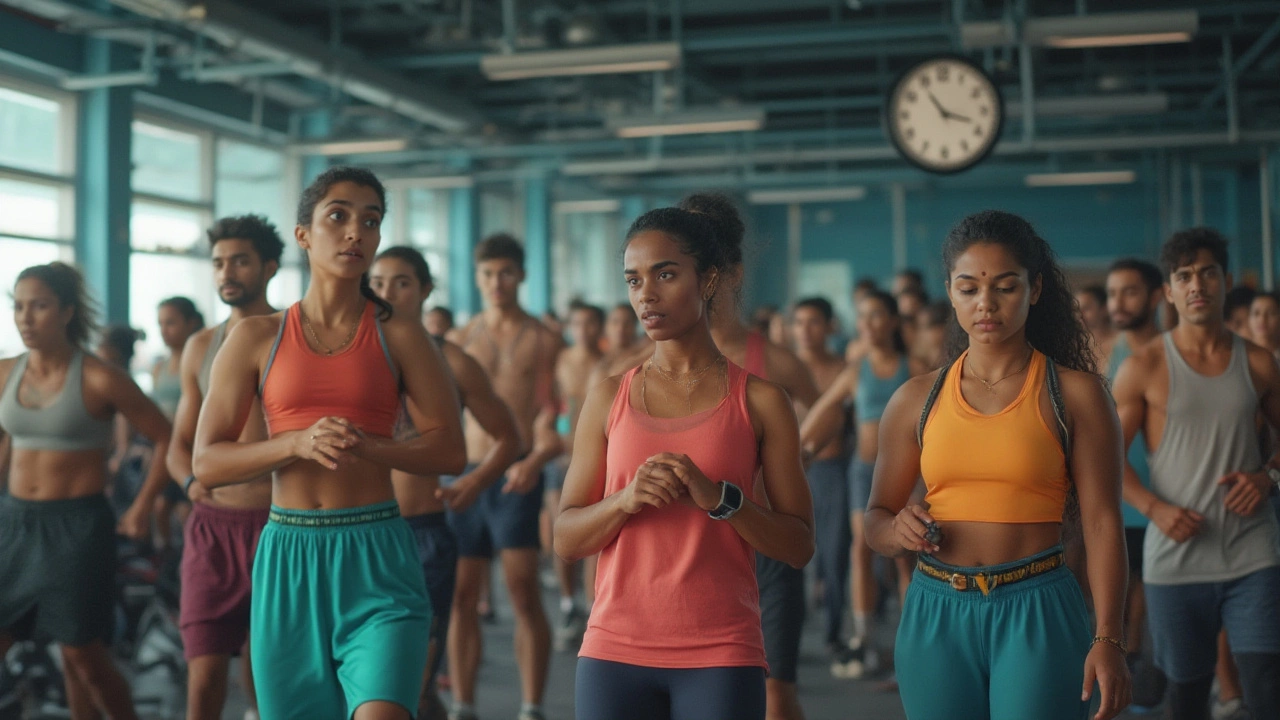Picture this: It's 6:30pm and the gym is packed. Over by the squat racks, there's always that one bloke who's been there since you arrived, headphones on, checking his watch between sets. You finish an entire workout, head to the water fountain, and he’s... still there. Two questions pop up: is he crushing it, or just spinning his wheels? Is spending two hours in the gym really better, or is it just wasting time? If you’re training for a marathon, prepping for a bodybuilding show, or just hoping to not throw out your back while chasing after your kids (hi, Jasper and Leona), you’ve probably wondered the same thing—do you really need to stay that long, or is there such a thing as too much?
How Long Should a Gym Session Be? What Science—and Real Gyms—Say
So, is 2 hours in the gym long? Well, the answer depends on your goals, your fitness level, age, and how smart you’re actually training. Most research on workout duration settles somewhere around the 45-75 minute mark for the sweet spot. A study out of McMaster University in Canada found that resistance workouts beyond 60 minutes didn’t actually build more muscle than those clocking in around 30-45 minutes, provided the work volume was matched. Shorter, focused sessions often mean higher intensity, less idle time, and, often, better results.
Let's look at what actually eats up time at the gym. There’s warmup (5-10 minutes, unless you’re still sore from last week’s deadlifts), working sets, rest intervals (sometimes more scrolling than recovery), waiting for equipment (especially when someone’s turned a bench into a social media studio), and cool-down. Unless you’re an athlete running through a very specific, periodized plan—or you’re there for back-to-back classes—going well over an hour usually means you’re stalling, socializing, or not pushing the pace.
Consider this: research published in the Journal of Strength and Conditioning Research tracked progress among people who spent 45 vs 90 minutes strength training, and found “no significant difference” in strength or muscle gain when the work was properly structured. This lines up with the “minimal effective dose” principle—do what you need, no more, no less. When I asked around at my Brisbane gym, even the old-school trainers agreed: efficiency trumps marathon sessions.
| Workout Duration | Recommended For | Risks |
|---|---|---|
| 45-75 minutes | Most gym-goers, hypertrophy, fat loss | Low risk of fatigue, fits busy schedules |
| 90-120 minutes | Elite athletes, sport-specific endurance | Risk of mental burnout, increased injury |
| 120+ minutes | Marathoners, ultra-endurance training | High risk of overtraining, may hurt recovery |
What about those who say longer sessions “burn more calories”? Not really. After about 60-75 minutes, your motivation sags, technique slips, and your body starts pumping out cortisol—a stress hormone that wears down your muscles. You might actually undo some benefits by hanging around too long.
Plus, there’s real life to juggle—kids’ after-school sport, dinner that isn’t another protein shake, and, you know, work. If two-hour gym sessions are eating up your whole week and making you skip sleep, your gains (and sanity) are probably taking a hit.

When 2-Hour Gym Sessions Make Sense—and When They Really Don’t
Alright, there are sometimes when a 2 hour gym session is justified, but those times are rare. If you’re an advanced lifter peaking for a comp, or you’re a rugby player doing heavy strength, skills, and conditioning sessions together, fine. Sport-specific training blocks or workouts split up by lots of rest (think Olympic lifting or high-level athletics) can run long. The key is, these folks have a plan, know how to manage fatigue, and usually get professional programming.
But for the average person—fat loss, muscle-building, basic cardio health—all signs point to shorter, sharper, more focused workouts getting better results. Let’s break down why:
- Quality over quantity: Most strength and muscle gains come in the early part of a session. After 60-75 minutes, your power drops.
- Avoiding overtraining: Two hours ups your injury risk—especially for joints and connective tissue. There’s a reason most pro athletes don’t always train for hours daily.
- Better compliance: Got a full-time job or family? Trying to fit two-hour blocks into your week means sessions get skipped—the opposite of progress.
- Nutrition and recovery: Longer workouts can also mean greater nutrient needs. If you’re not refueling well, hello, burnout.
I know blokes who spend half an hour jawing at the water fountain or spending ages picking the right playlist. Is it really training if half your session is scrolling through TikTok? A 2023 study tracking the impact of “active” versus “passive” gym time found the average gym-goer actually trains for only 35-50 minutes in a two-hour “session.” The rest? Social breaks, waiting, or checking DMs.
Think about what two hours actually looks like in real life. If you’re doing six sets of bench press or squats, that can eat 40 minutes depending on rest. Add a full push/pull/legs split, cardio intervals, time for travel, and recovery? You’re pushing the boundaries of what’s practical (and let’s be honest, not always sustainable).
For those training two hours because of a real passion or prepping for a comp—just make sure you’re not running on empty and balance high workloads with ample rest and nutrition. But if you’re clocking marathon sessions just to “work off” dessert or because you think more is always better, chances are you’re stalling yourself.

Making Every Minute in the Gym Count
So how do you get the best out of your gym time? Two hours may sound impressive, but efficiency usually wins the race. Here’s how to get results in less time, sometimes even better than extended sessions:
- Plan before you go. Write your workout down on your phone—not in your head. Know your reps, rest, sets, and the order.
- Stick to compound exercises. Squats, deadlifts, presses, pullups, and rows work multiple muscles for bigger bang-your-buck. You don’t have to do every exercise you see on Instagram.
- Limit rest (unless training for max strength). If your goal is muscle gain or fat loss, keep rest between sets to 60-90 seconds.
- Superset or circuit: Pair two exercises to save time and crank up your heart rate. No more standing around.
- Track progress, not just sweat. More isn’t always better—lifting a little heavier or squeezing out an extra rep each session does more for you than another 45 minutes of “winging it.”
There’s a massive difference between “active work” and “just being there.” Data from wearables like Garmin and Apple Watch show that most calories burned, and most workout adaptation, comes from highly focused 40-70 minute sessions—after that, it’s diminishing returns for most people.
If you do find you want or need to spend more than an hour at the gym (maybe you’re adding steady-state cardio, or have a double session for sport), split it up across the day if you can. Evidence from recent studies on training frequency vs. session length found that shorter, more frequent bouts lead to better adherence and less burnout.
At my local gym, the fittest people—the ones who seem to actually enjoy their training—keep it tight, chat quickly between sets, and finish strong. My tip: treat your gym time like a meeting with yourself. Book it, nail it, get out of there. You’ll have more energy for literally everything else in life, from backyard soccer with the kids to dragging shopping bags up the stairs (believe me, being “functional” suddenly matters when both children want a piggyback after you’ve hit legs).
If you ever reach the end of a short, sharp session, still feel unfatigued, and are tempted to stay another hour, check if you’re pushing yourself hard enough. If not, tweak the training, not just the clock. Your body—and your calendar—will thank you for it.
